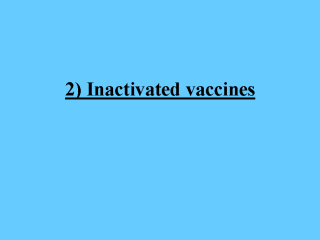| front |1 |2 |3 |4 |5 |6 |7 |8 |9 |10 |11 |12 |13 |14 |15 |16 |17 |18 |19 |review |
 |
The traditional
inactivant is 1: 4000 formaldehyde overnight in the fridge. Formaldehyde cross links
protein and nucleic acid but for some unenveloped viruses leaves a persistent fraction
which is inactivated very slowly. This has resulted in improperly-inactivated FMDV
vaccines perpetuating disease in the EU. For this reason preferred inactivants are the
azuridines and beta propiolactone which bind only to the nucleic acid and do not result in
persistent fractions. The latter are both highly suspect carcinogens and must be contained
until they have been diluted 1:4000 in the virus. Dead vaccines must be inoculated in much higher concentration than live virus eg inactivated FMDV compared to live rinderpest. High yielding strains are used in their preparation to reduce cost e.g. egg-adapted influenza strains. Each batch is tested for antigen content and lack of infectivity. Depo adjuvants e.g. oil or alhydrogel are also used to reduce the input of virus by the slow release to stimulate a secondary immune response. They also attract macrophagese vaccine. The development of firosarcoma's in cats has been associated with annual vaccination of adjuvant into the same place eg the scruff of the neck. For this reason cats are now injected at a variety of sites and live intranasal vaccines are being reintroduced in the USA. |